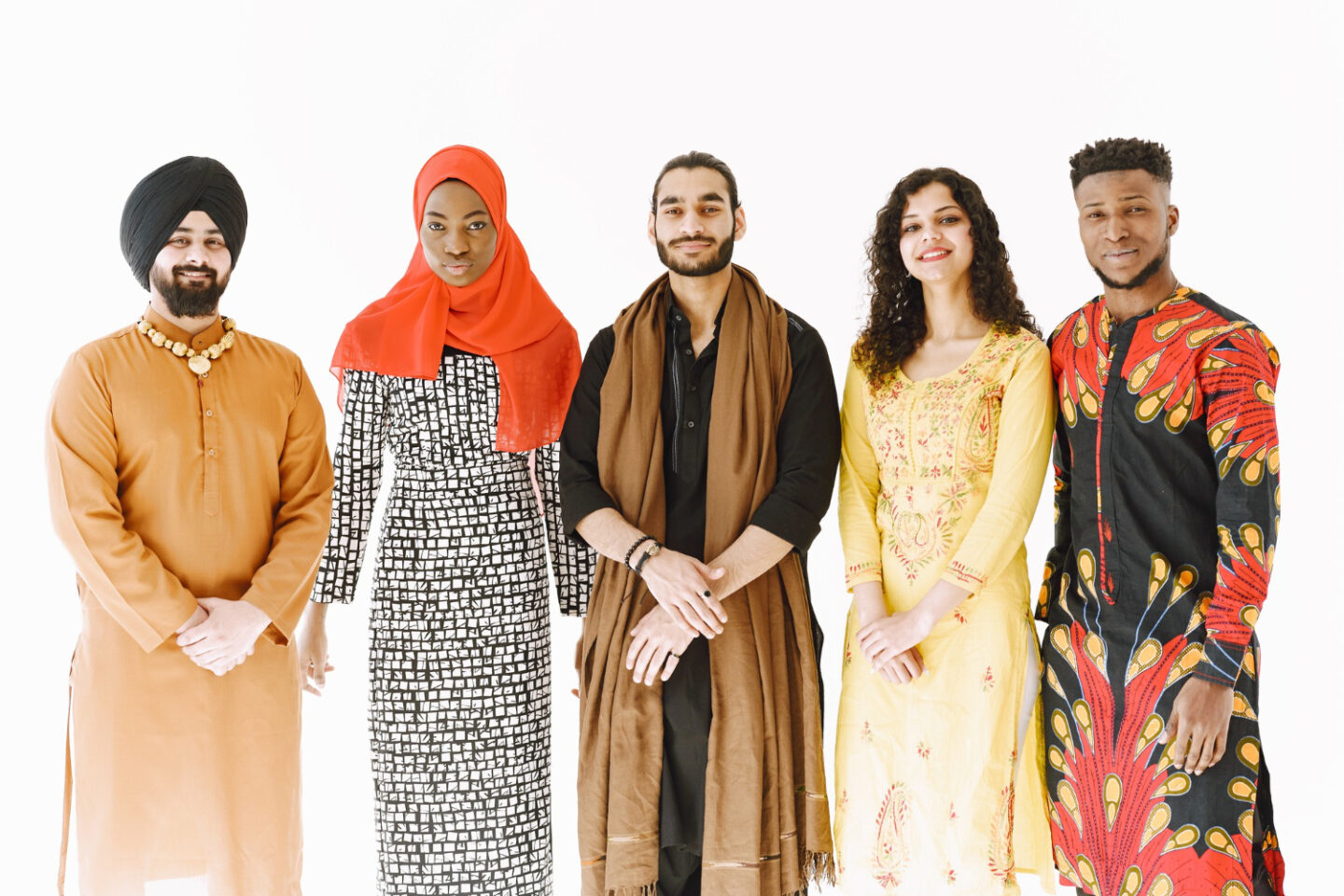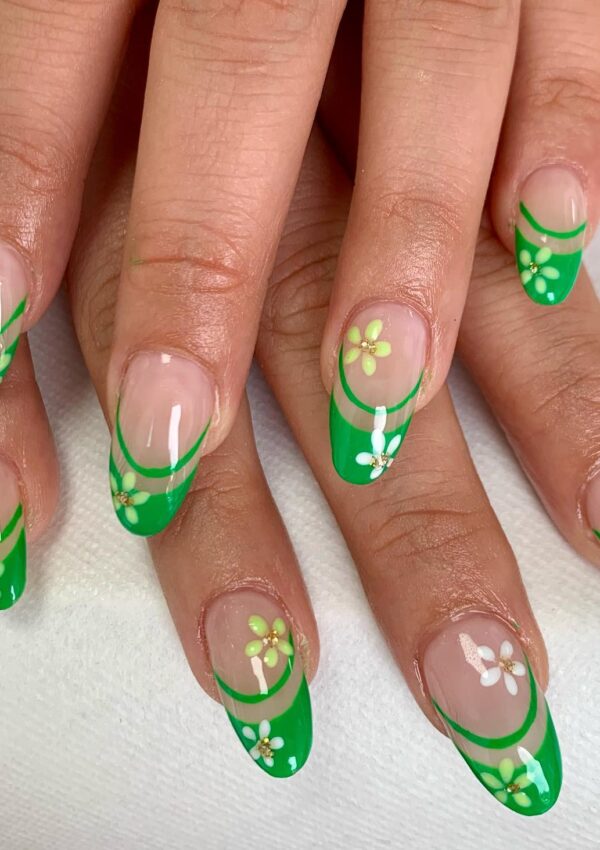Love, an emotion so profound, transcends boundaries and bridges the vast expanse between souls. Regardless of where we come from, which corner of the globe we call home, or which language we speak, this powerful emotion finds its way to express itself. Have you ever wondered how these three magical words, “I Love You,” sound in the melodious tongues of different cultures?
Just imagine whispering a declaration of love in the romantic lilt of French or the passionate cadence of Italian. The beauty of expressing love is that while its essence remains unchanged, every culture adds its unique flavor, making each confession as special as the next.
Join me on this enchanting journey as we explore 100 ways to say “I Love You” in different languages from every nook and cranny of our diverse world, unveiling the universal sentiment of love wrapped in the richness of varied dialects.
The Importance of Saying “I Love You”

In the vast tapestry of human emotions, few phrases hold as much weight and significance as the simple “I Love You.” These three words, when strung together, have the power to heal wounds, forge connections, and ignite the most profound feelings. From a psychological perspective, expressing love not only validates the feelings of the one uttering the words but also reinforces a sense of belonging and emotional security in the recipient. The acknowledgment of love often serves as a gentle reminder of our intrinsic worth, ensuring that we are cherished and valued.
But let’s transcend individual bonds for a moment. Imagine a world where every “I Love You” also becomes a bridge connecting disparate cultures. Love, in its purest form, knows no barriers—be they linguistic, cultural, or geographical. The manner in which different cultures express love might differ, but the underlying emotion is beautifully universal. So, while the words may change from one language to another, the essence remains strikingly similar. Whether it’s the vibrant “Te amo” of Spanish or the gentle “Aishiteru” of Japanese, each phrase is a testament to the fact that love, in any dialect, is the glue that binds humanity together, reminding us of our shared experiences and emotions in this vast world.
A Dive into Different Cultures

Love, that timeless emotion, has always been at the heart of human civilization. As we traverse across the globe, we encounter a myriad of cultures, each with its distinct traditions, tales, and tones. What’s utterly captivating is how each of these cultures has its own unique way of expressing love. But, as with any journey, it’s not just the destination – in this case, the phrase – that matters. It’s the story behind it, the cultural nuances, and the context that truly bring it to life.
For instance, in certain cultures, openly proclaiming one’s love is a bold act reserved for special occasions, while in others, it’s a daily declaration, as common as saying ‘good morning’. There are places where love is wrapped in metaphors and sung in verses, and then there are those where it’s whispered softly, away from the public eye, sacred in its secrecy.
In Korea, for example, saying “사랑해 (Saranghae)” is laden with deep emotion, often reserved for genuine moments of affection, not to be used lightly. Conversely, in the streets of Paris, “Je t’aime” resonates freely, echoing the city’s romantic ambiance. And then there are the Maasai of Kenya, who might not always use direct words but show love through acts of sacrifice, like gifting a cherished bead necklace.
Thus, to truly appreciate these various expressions of love, one must venture beyond mere translation. It’s about immersing oneself in the cultural stories, understanding the weight of the words, and recognizing the contexts in which they come alive. For in the end, while love may be a universal language, the stories it writes are as diverse as the cultures that voice them.
100 Ways to Say “I Love You”

Our planet is a vast tapestry of cultures, traditions, and languages, each carrying its own unique expression of love. While the sentiment of love remains universal, the manner in which it is communicated can vary widely. Journey with us as we explore the phrase “I love you” across different continents, unveiling the rich linguistic diversity that binds us all together in the most human of emotions. Whether whispered softly in Europe or passionately proclaimed in Africa, let’s discover the myriad ways love transcends borders.
Asian languages:

- Chinese (Mandarin): 我爱你 (Wǒ ài nǐ)
- Japanese: 愛してる (Aishiteru)
- Hindi: मैं तुमसे प्यार करता हूँ (Main tumse pyaar karta hoon) [for males]
- Korean: 사랑해 (Saranghae)
- Arabic: أحبك (Uhibbuka)
- Urdu: میں تم سے محبت کرتا ہوں (Main tumse muhabbat karta hoon)
- Thai: ฉันรักคุณ (Chan rak khun)
- Vietnamese: Anh yêu em [for males speaking to females]
- Bengali: আমি তোমায় ভালোবাসি (Ami tomay bhalobashi)
- Punjabi: ਮੈਂ ਤੁਹਾਨੂੰ ਪਿਆਰ ਕਰਦਾ ਹਾਂ (Main tuhānū pi’ār kardā hāṁ)
- Malay/Indonesian: Aku cinta kamu
- Filipino (Tagalog): Mahal kita
- Nepali: मैले तिमीलाई माया गर्छु (Maile timīlā’ī māyā garchu)
- Sinhalese: මම ඔයාට ආදරෙයි (Mama oyāṭa ādareyi)
- Tamil: நான் உன்னை காதலிக்கின்றேன் (Nāṉ unnai kādalikkireṉ)
- Gujarati: હું તમને પ્રેમ કરું છું (Huṁ tamnē prēm karuṁ chuṁ)
- Marathi: माझं तुमच्यावर प्रेम आहे (Mājha tumacyāvar prēm āhē)
- Persian (Farsi): دوستت دارم (Dūstet dāram)
- Khmer (Cambodian): ខ្ញុំស្រលាញ់អ្នក (Knhom sralanh anak)
- Lao: ຂ້ອຍຮັກເຈົ້າ (Khoy hak chao)
- Burmese (Myanmar): ငါသို့ကိုယ်ကျင်တယ် (Nga thu ko kyin tae)
- Pashto: زه غواړم ټا (Za ta sara meena laram)
- Kurdish: Ez hej te dikim
- Telugu: నాకు నీకు ఇష్టం (Nāku nīku iṣṭaṁ)
- Kannada: ನಾನು ನಿಮಗೆ ಪ್ರೀತಿಸುತ್ತೇನೆ (Nānu nimge prītisuttēne)
- Malayalam: ഞാൻ നിന്നെ സ്നേഹിക്കുന്നു (Njan ninne snehikkunnu)
- Uzbek: Men seni sevaman
- Kazakh: Мен сені сүйемін (Men seni süyemin)
- Assyrian: Ana bayenakh
- Dhivehi (Maldives): Aharen kalaa dhey hithaa
African languages:

- Swahili: Nakupenda
- Zulu: Ngiyakuthanda
- Hausa: Ina son ku
- Yoruba: Mo nifẹ rẹ
- Amharic: አፍቅህን (Afekirinhin)
- Somali: Waan ku jeclahay
- Igbo: A hụrụ m gị n’anya
- Xhosa: Ndiyakuthanda
- Akan (Twi): Me dɔ wo
- Oromo: Sin jaalladha
- Tigrinya: Yefkrikni
- Shona: Ndinokuda
- Afrikaans: Ek het jou lief
- Malagasy: Tiako ianao
- Sesotho: Kea u rata
- Luganda: Nkwagala
- Wolof: Nopp naa la
- Kinyarwanda: Ndagukunda
- Bambara: M’bi fe
- Berber (Tamazight): Hemlaghk
- Fulfulde (Fula): Mi yidi ma
- Kanuri: Ina son ku
- Sango: Mbi mo kouê
- Tamasheq (Tuareg): Hamlaghkem
- Ga: Me dor wo
- Kikuyu: Ndagũka
- Chewa (Nyanja): Ndimakukonda
- Tiv: M kpôô ma
- Dinka: Anɛ̈ɛn
- Bemba: Nalikutemwa
European languages:

- French: Je t’aime
- Spanish: Te amo
- German: Ich liebe dich
- Italian: Ti amo
- Russian: Я тебя люблю (Ya tebya lyublyu)
- Dutch: Ik hou van je
- Portuguese (European): Eu amo-te
- Greek: Σ’ αγαπώ (S’agapo)
- Turkish: Seni seviyorum
- Ukrainian: Я тебе кохаю (Ya tebe kohayu)
- Polish: Kocham cię
- Swedish: Jag älskar dig
- Norwegian: Jeg elsker deg
- Danish: Jeg elsker dig
- Finnish: Rakastan sinua
- Hungarian: Szeretlek
- Belarusian: Я цябе кахаю (Ya tsyabe kakhayu)
- Estonian: Ma armastan sind
- Latvian: Es tevi mīlu
- Icelandic: Ég elska þig
- Czech: Miluji tě
- Slovak: Ľúbim ťa
- Lithuanian: Aš tave myliu
- Bosnian/Croatian/Serbian: Volim te
- Slovenian: Ljubim te
- Bulgarian: Обичам те (Obicham te)
- Romanian: Te iubesc
- Maltese: Inħobbok
- Albanian: Të dua
- Macedonian: Те сакам (Te sakam)
American Languages (North, Central, South):

- Navajo (Diné bizaad – North America): Ayóó anííníshní
- Quechua (South America): Munayki
- Nahuatl (Central America – Mexico): Ni mits neki
- K’iche’ (Central America – Guatemala): In na’oj
- Guarani (South America – Paraguay, Brazil): Rohayhũ
- Aymara (South America – Bolivia, Peru): Munsmawa
- Ojibwe/Chippewa (North America): Gi-zahgin
- Mohawk (North America): Konoronhkwa
- Greenlandic (Kalaallisut – North America): Asavakit
- Lakota Sioux (North America): Techihhila
- Mapuche (Mapudungun – South America – Chile): Ñuñayin
- Kaqchikel (Central America – Guatemala): Ruk’ ri’
- Wayuu (South America – Venezuela, Colombia): Muin manaáshi
- Tzotzil (Central America – Mexico): Lek muk’ul ta
- Kuna (Central America – Panama): Nuedgi ginnid
- Guarayo (South America – Bolivia): Toi coiyu
- Zapotec (Central America – Mexico): Nadxiie lii
- Mixtec (Central America – Mexico): Nduvua
- Emberá (Central and South America – Panama, Colombia): Jiparãna
- Yoruba (Central America – Cuba, brought by African diaspora): Mo nifẹ rẹ (Note: While Yoruba originates from Africa, it has been retained and is actively spoken in parts of the Americas due to the transatlantic slave trade.)Top of Form
Oceanian languages:

- Hawaiian (Hawaii): Aloha wau ia ‘oe
- Maori (New Zealand): Aroha ahau ki a koe
- Samoan (Samoa): Uo te alofa ia te oe
- Tongan (Tonga): Ofa atu
- Fijian (Fiji): Au domoni iko
- Bislama (Vanuatu): Mi lavem yu
- Tahitian (Tahiti): Ua here vau ia oe
- Chamorro (Guam and Mariana Islands): Hu guaiya hao
- Palauan (Palau): A kmal mesaul
- Tok Pisin (Papua New Guinea): Mi likim yu
Love Beyond Words

While our journey through languages has highlighted the many ways to verbally express love, there’s an entire realm of love that often goes unsaid, yet deeply felt. Sometimes, words, no matter how beautifully crafted or profoundly pronounced, fall short. There exists a world where love is not uttered but is unmistakably expressed, echoing sentiments louder than any spoken language ever could.
Imagine a mother’s gentle cradle of her newborn, the silent promise of protection and unconditional love. Consider the way two people can sit in stillness, their fingers entwined, with no words exchanged, and yet, the message is crystal clear. The elderly couple who share a quiet smile as they recall shared memories, or the simple act of a friend offering a shoulder during tough times – these are the universal languages of love that don’t require translation.
Across the world, from bustling cities to remote villages, gestures of love remain consistent. A tender touch, a thoughtful gift, an unexpected hug, or even just being there during moments of silence speak volumes. These non-verbal cues, whether intentional or spontaneous, are universal indicators of affection, transcending cultural and linguistic barriers.
It’s fascinating to note that while words can be misinterpreted or lost in translation, genuine actions rooted in love are almost universally understood. They tap into our primal instincts, reminding us that before languages were formed, humans communicated and expressed their emotions through actions. As the saying goes, “Actions speak louder than words,” and when it comes to love, this couldn’t be more accurate.
As we celebrate the myriad ways to verbally convey love, let’s not forget the silent, powerful gestures that show love in its purest form. Because, at its core, love isn’t just about saying the right words but also about showing up, being present, and letting our actions do the talking.
How to Use These Phrases in Your Daily Life

Having unlocked a treasury of ways to say “I Love You” from around the world, the real adventure begins when we weave these expressions into the fabric of our daily interactions. Using these phrases isn’t just about being linguistically diverse; it’s about adding a sprinkle of global charm to our regular conversations, deepening connections, and opening doors to richer cultural experiences.
Adding a Touch of Romance by Using Different Languages

Imagine surprising your partner with a whispered “Ti amo” during a cozy Italian dinner date or writing “Je t’aime” on a note tucked into their morning coffee cup. Even if you both speak the same native language, introducing these phrases can infuse your relationship with an air of mystery and romance. It’s akin to taking a mini-vacation: for that fleeting moment, you’re not just yourselves but global citizens, connecting over the universal language of love.
Furthermore, anniversaries, birthdays, or even just ordinary days can be spiced up by penning love letters or sending text messages in different languages. Don’t forget to provide a translation, or better yet, let your loved one dive into the thrill of decoding your heartfelt message.
Bonding with People from Other Cultures

But it’s not just about romance. Using these phrases can bridge gaps and foster genuine connections with people from diverse backgrounds. Imagine the joy on a colleague’s face from Japan when you appreciate their hard work with a sincere “Aishiteru” or the bond you form with a new neighbor from South Africa when you greet them with “Ngiyakuthanda.”
It’s a small gesture, but it demonstrates a willingness to embrace and appreciate their culture. In a world that’s more connected than ever, these little linguistic nuances can be the key to fostering understanding and camaraderie. They act as icebreakers in unfamiliar terrains and can even pave the way for deeper conversations about traditions, beliefs, and personal stories.
Incorporating these love phrases into your life is an invitation to not only express affection but to also embark on a journey. A journey where love becomes more than just a feeling—it becomes an experience, a story, a bridge to understanding the vast, beautiful tapestry of human connection.
100 Ways To Say I Love You In Different Languages

As we draw this linguistic love journey to a close, it’s impossible not to marvel at the tapestry of human connection. From the cobbled streets of Paris to the bustling markets of Delhi, the snow-capped peaks of the Andes to the sun-drenched shores of Oceania, there’s one thread that binds us all – love. It’s the universal song that every heart knows how to sing, albeit in myriad dialects and tunes.
Each “I Love You” in every language is more than just words; it’s a testament to our shared human experience, our innate desire to connect, cherish, and understand. Whether whispered softly in the dim light of dawn, written on age-old parchment, or declared boldly under a canopy of stars, love finds its voice in every corner of our vast world.
To all our dear readers: I encourage you, as you go about your day, to sprinkle a little love wherever you can. Maybe today’s the day you tell someone “Ti amo” or “Aishiteru.” Or perhaps you’ll be inspired to explore further, diving into languages not listed here. Remember, every language is rich with its expressions of love, waiting to be discovered, waiting to be spoken.
As a call-to-action, I invite you all to dive into the comments below. What’s your favorite way to say “I love you” from our list? Do you have a phrase from a language or dialect we missed? Share with our community and let’s continue this celebration of love and language.
In the grand tapestry of life, every thread, every word, and every gesture counts. So, no matter the language, no matter the culture, let’s vow to keep love’s flame burning bright, one “I love you” at a time.






Leave a Reply